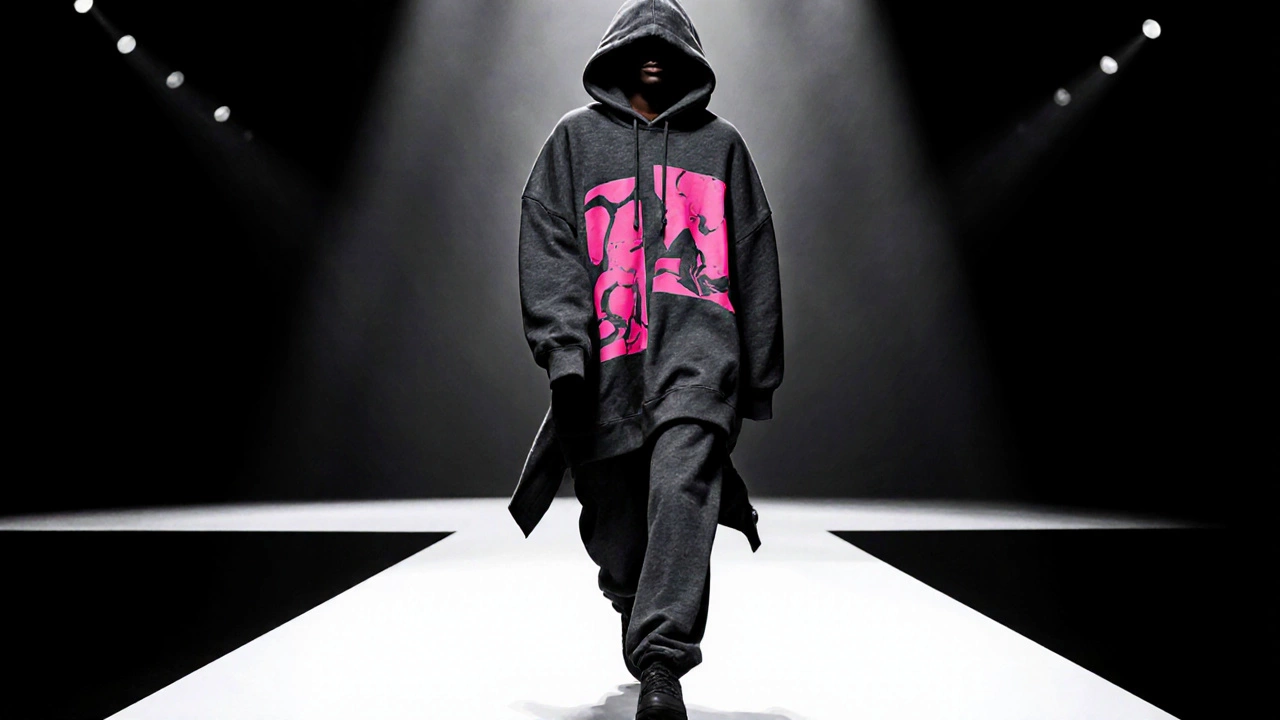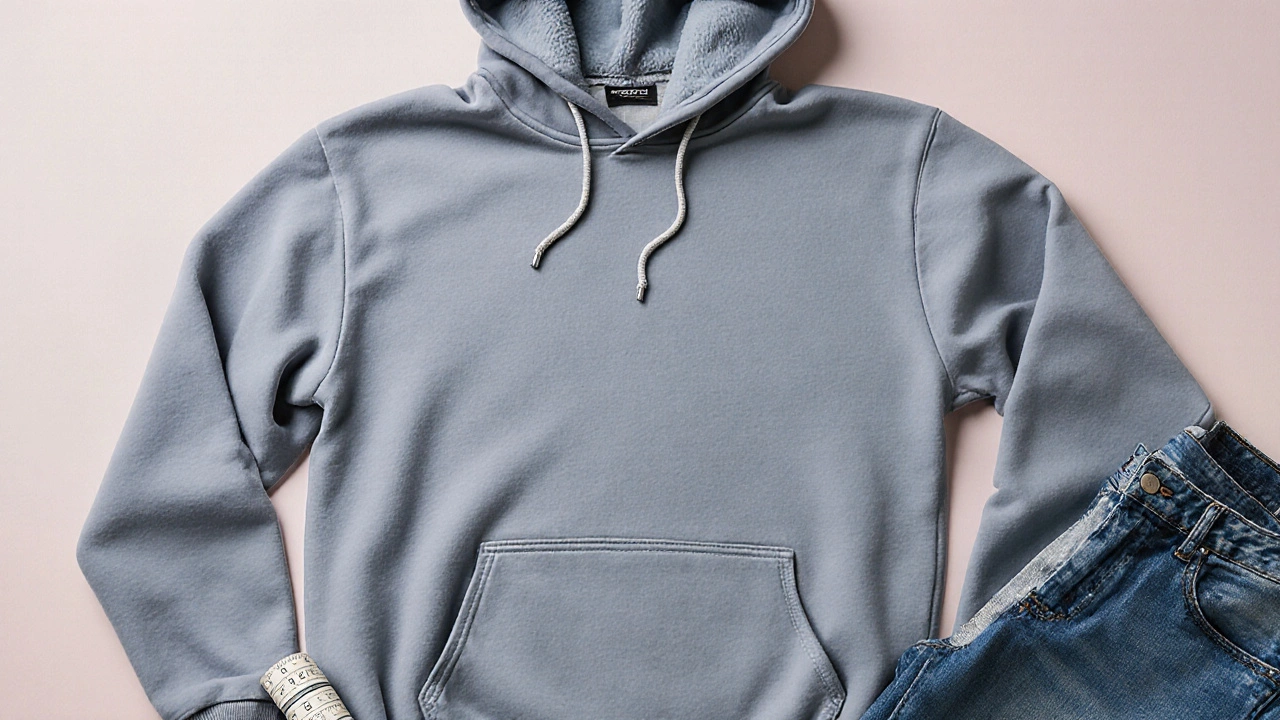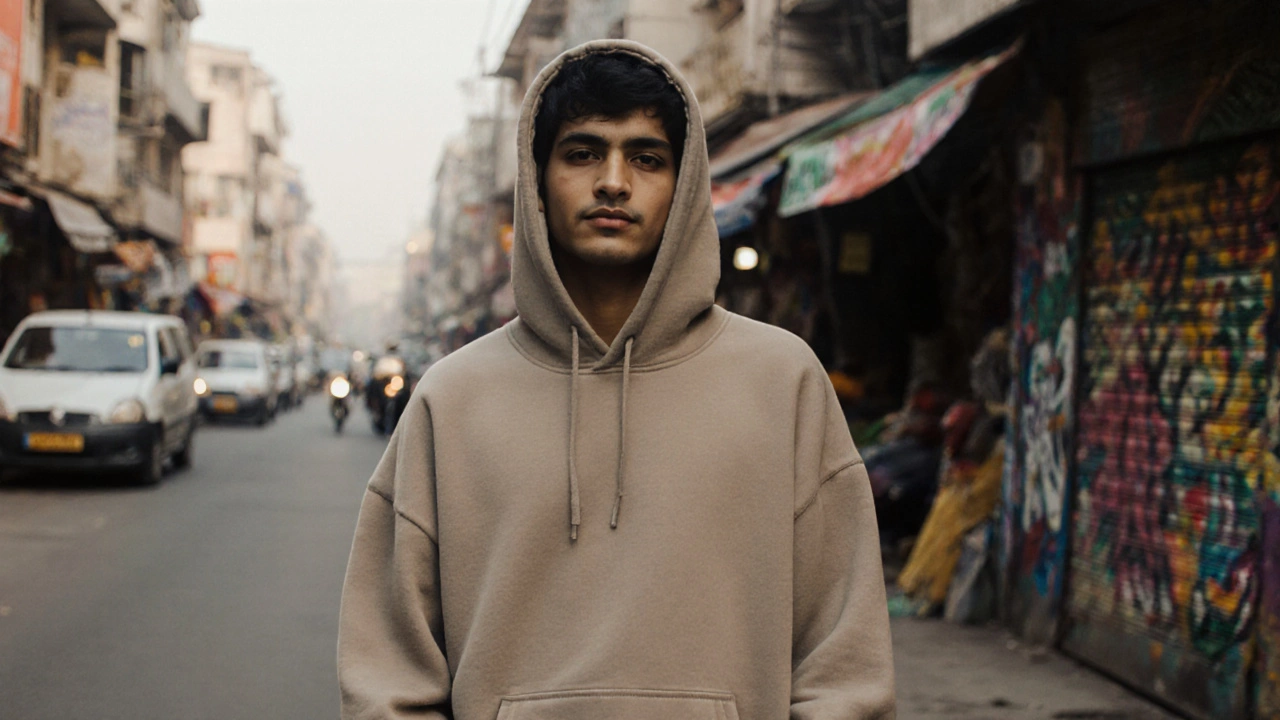Baggy Hoodie Style Identifier
Recommended Style:
Key Characteristics:
| Fit Type | Typical Length | Shoulder Position | Body Silhouette | Best Use Cases |
|---|---|---|---|---|
| Baggy / Oversized | Hip-length or longer | Drop 2–4 cm below natural shoulder | Loose, draped | Streetwear, casual layering, comfort-first looks |
| Regular / Classic | Waist-length | Aligned with natural shoulder | Tailored but relaxed | Gym wear, everyday basics, team apparel |
| Slim / Athletic | Hip-high | Sits at shoulder seam | Fitted, body-contouring | Performance sports, layered under jackets, stylish minimalism |
If you’re hunting for a baggy hoodie, you’ve probably heard a handful of different names tossed around on Instagram, TikTok, and street‑style blogs. All of those terms point to the same relaxed silhouette, but each label carries a tiny nuance that can help you pick the perfect piece for your wardrobe.
Quick Takeaways
- Baggy, oversized, slouchy, and relaxed‑fit hoodie all describe a loose, deliberately roomy cut.
- The term you’ll hear most often depends on the brand, sub‑culture, or regional slang.
- Key visual clues: extra length, dropped shoulders, larger armholes, and a roomy hood.
- Style it with skinny jeans, joggers, or layered over a t‑shirt for a balanced look.
- When buying, check the brand’s size chart and look for fabric weight (usually 300‑400gsm cotton‑fleece).
What Exactly Is a Baggy Hoodie?
Baggy hoodie is a loose‑fitting, intentionally oversized sweatshirt with a hood, designed for comfort and a relaxed street‑wear aesthetic. The silhouette drops the shoulder seam, adds extra fabric around the torso, and often features a longer back hem. It differs from a classic hoodie, which aims for a snugger, athletic fit.

Common Names and Their Nuances
Fashion enthusiasts and retailers love to sprinkle different labels on the same cut. Understanding the subtle differences helps you speak the language of the community you’re buying from.
Oversized hoodie is a term popularized by high‑fashion streetwear collections; it emphasizes size beyond the wearer’s normal dimensions. Designers often use dramatic proportions to make a visual statement, and the brand may price it higher because of the hype.
Slouchy hoodie refers to a style that drapes loosely around the body, creating a relaxed, “slouched” silhouette; it’s usually paired with relaxed or tapered bottoms. The slouchy look is favored by skateboarders and casual gamers who want movement without restriction.
Relaxed‑fit hoodie describes a cut that offers extra room in the chest and sleeves while maintaining a modest length; it’s the most functional label for everyday wear. This phrasing appears often in performance‑wear catalogs and men’s basics sections.
Streetwear hoodie is a hoodie that aligns with urban fashion culture, often featuring bold graphics, brand logos, and a baggy silhouette. The term is less about fit and more about the cultural context.
Other occasional aliases include “throwback hoodie” (referencing 90s hip‑hop aesthetics) and “chunky hoodie” (when the fabric weight adds bulk). Regardless of the label, the core characteristics stay the same.
How to Spot a Baggy Hoodie in the Wild
- Length: The back hem typically reaches the hips or lower, sometimes covering the rear.
- Shoulder drop: Seams sit a few centimeters below the natural shoulder line.
- Armhole size: Larger cut for unrestricted movement; you can slip your hand in and out easily.
- Hood proportion: The hood often mirrors the oversized body, sitting bulky on the head.
- Fabric weight: Look for 300‑400gsm cotton‑fleece or a blend with brushed polyester.
When shopping online, read the product description for cues like “relaxed fit,” “drop shoulder,” or “extra length.” Size charts will usually have a “fit guide” that indicates whether the garment runs true to size or intentionally larger.
Styling Tips for Baggy Hoodies
Because a baggy hoodie dominates your upper half, balance is key. Here are quick rules that work for most body types:
- Pair with tapered bottoms. Skinny jeans, slim joggers, or fitted leggings keep the silhouette from looking like a tent.
- Layer smartly. A fitted t‑shirt underneath adds color contrast and prevents a “blanket” effect.
- Cinch the waist. Use a belt or a high‑waisted pant to create a waistline, especially if you’re tall.
- Footwear matters. Chunky sneakers reinforce the street‑wear vibe, while minimalist leather shoes add a high‑fashion twist.
- Accessorize minimally. A beanie or a simple chain works; avoid overloading because the hoodie already draws attention.
Seasonal tweaks help too: swap a cotton‑fleece baggy hoodie for a lighter knit when the temperature climbs, or layer a bomber jacket over it for extra warmth.

Buying Guide: What to Look For
Whether you shop in‑store or click “add to cart,” keep these checkpoints in mind.
- Fabric composition. 100% cotton offers breathability, while a cotton‑poly blend resists pilling.
- Weight (gsm). 300‑350gsm is typical for a fall‑ready baggy hoodie; anything above 400gsm feels more like a winter coat.
- Construction. Double‑stitched seams reduce fraying; a brushed interior adds softness.
- Brand reputation. Streetwear houses like Supreme, Off‑White, and Champion have reliable sizing charts, while fast‑fashion labels may vary.
- Return policy. Because fit is subjective, a flexible return window lets you test the silhouette at home.
Don’t forget to check the care label: most baggy hoodies survive a cold wash, but high‑temperature drying can shrink the already loose fit.
Comparison: Baggy vs. Regular vs. Slim Fit Hoodies
| Fit Type | Typical Length | Shoulder Position | Body Silhouette | Best Use Cases |
|---|---|---|---|---|
| Baggy / Oversized | Hip‑length or longer | Drop 2‑4cm below natural shoulder | Loose, draped | Streetwear, casual layering, comfort‑first looks |
| Regular / Classic | Waist‑length | Aligned with natural shoulder | Tailored but relaxed | Gym wear, everyday basics, team apparel |
| Slim / Athletic | Hip‑high | Sits at shoulder seam | Fitted, body‑contouring | Performance sports, layered under jackets, stylish minimalism |
When you weigh the options, ask yourself if you want the hoodie to be the focal point (baggy) or a subtle layer (regular or slim). Your answer will guide the purchase.
Frequently Asked Questions
Is a baggy hoodie the same as an oversized hoodie?
They share the same loose silhouette, but “oversized” is a fashion‑industry label that often signals a higher‑price, trend‑driven piece, while “baggy” is a more casual, everyday description.
What fabric is best for a baggy hoodie?
A mid‑weight cotton‑fleece (300‑350gsm) offers softness and breathability. For colder months, a brushed polyester blend adds warmth without extra bulk.
Can I wear a baggy hoodie if I’m petite?
Yes-choose a size that’s true to your measurements (don’t size up) and pair it with high‑waisted skinny jeans or leggings to create proportion.
How do I wash a baggy hoodie without shrinking it?
Use cold water on a gentle cycle, avoid high‑heat drying, and tumble dry low or lay flat. If the label permits, a brief tumble on low heat can keep it fluffy.
What’s the difference between a slouchy hoodie and a relaxed‑fit hoodie?
A slouchy hoodie emphasizes a dropped, draped look, often with exaggerated length, while a relaxed‑fit hoodie focuses on comfort without extreme proportions-think slightly roomy but still neat.

